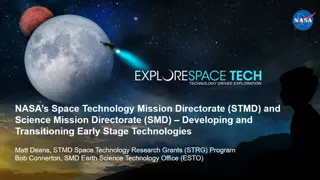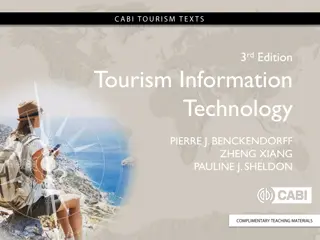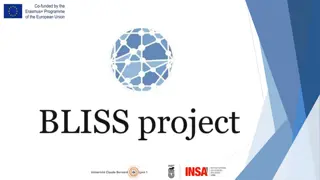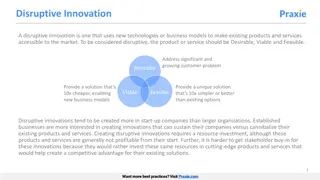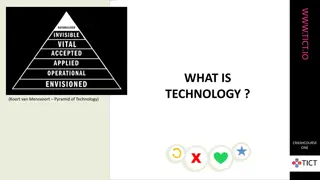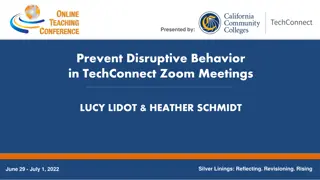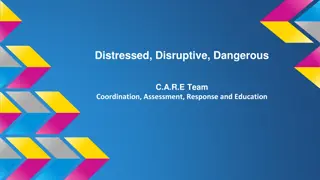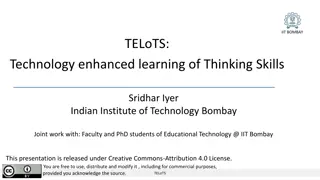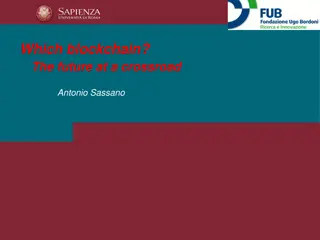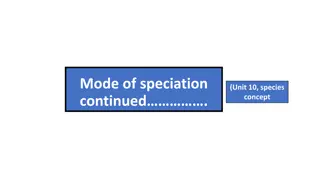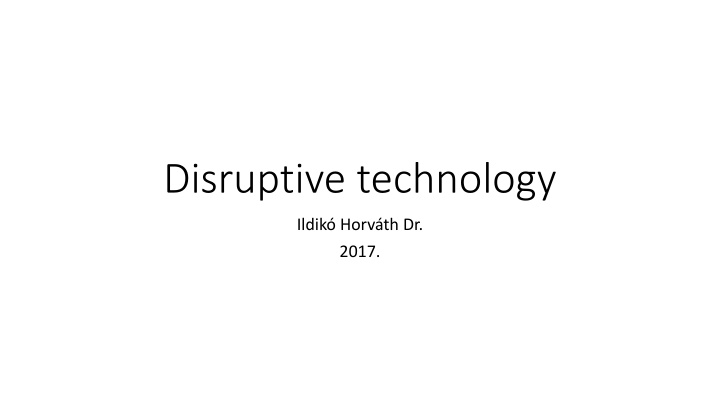
Disruptive Technology and Types of Innovations
Explore the concept of disruptive technology and its impact on innovation, along with insights into the different types of innovations and the life cycle of technology. Learn about the Gartner Hype Graph and how disruptive technologies evolve through various stages.
Download Presentation

Please find below an Image/Link to download the presentation.
The content on the website is provided AS IS for your information and personal use only. It may not be sold, licensed, or shared on other websites without obtaining consent from the author. If you encounter any issues during the download, it is possible that the publisher has removed the file from their server.
You are allowed to download the files provided on this website for personal or commercial use, subject to the condition that they are used lawfully. All files are the property of their respective owners.
The content on the website is provided AS IS for your information and personal use only. It may not be sold, licensed, or shared on other websites without obtaining consent from the author.
E N D
Presentation Transcript
Disruptive technology Ildik Horv th Dr. 2017.
Disruptive technology The word disruptive, - which Clayton M. Christensen, the professor of Harvard University created in 1997 and later published in his book titled The dilemma of the inventor , - refers to the creative destruction. An expression used for applying solutions in which the new technologies and business models fundamentally transform or replace the existing methods and this way they influence the business value of the products and services. - Disruptive technology: a radical technological innovation which appears day by day in 21st century.
Types of innovations Sustainable innovation which wants to provide a greater performance to the target-oriented customers with high demands, usually at a high price. These innovations are usually developed by big companies. They have financial, technical and human resources for development, for improving the already existing technologies. Disruptive innovation is where creating markets for satisfying new customer demands determined by new rules and not creating old markets is happening. Typically the start-up businesses have specialized for the disruptive innovations.
Life cycle of technology Radical technological development usually evolves with a longer research. Very often a long time elapses between the birth of the theory and its proving and implement. Everet M. Rogers and Frank Bass are the first representatives of the innovation spread models. According to Rogers definition, the spread, diffusion of the innovation is the temporal process during which a new product becomes gradually accepted in the target market by the potential customers and in the entire society technical innovation, especially the so-called disruptive
Gartner Hype Graph On the horizontal axis of the curve we can find the maturity or development in relation to which the curve shows the adoption of the given technology. The hype cycle provides a graphical and conceptual presentation of the maturity emerging technologies through five phases. Each disruptive technology goes through a similar cycle.


